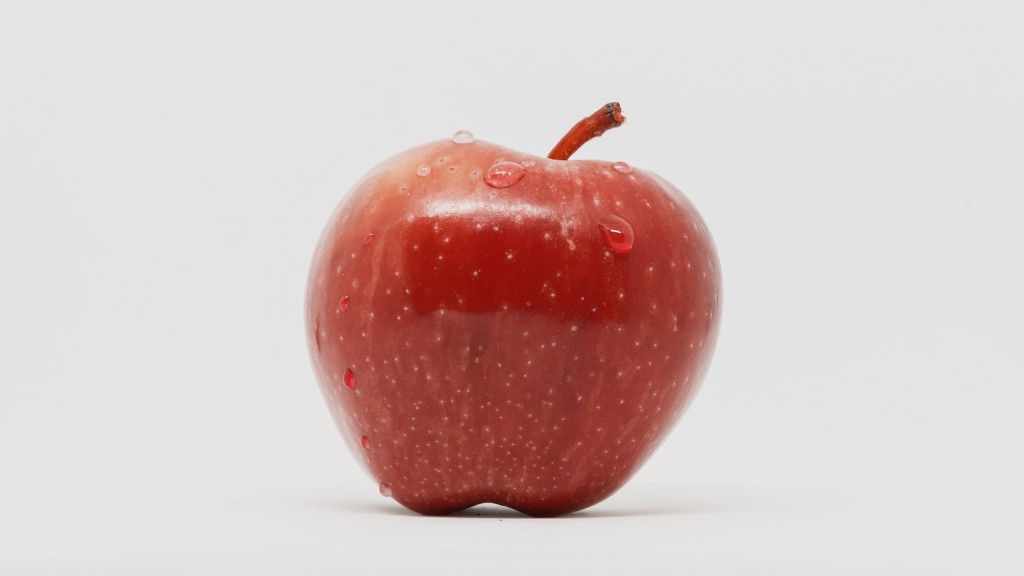Planting an apple tree bare root is an easy process when done right. To get started, you’ll need to choose a spot suitable for the growth of an apple tree. Ideally, it should be a relatively sunny, sheltered place with well-draining soil. Once you’ve selected a spot, prepare the soil by removing any weeds and large rocks, then either blending in compost or fertilizing the ground with a balanced, slow-release fertilizer. Dig a planting hole to a depth of at least one foot, but no deeper than the tree’s roots. If the root system is exposed, you can inspect it for any dead or diseased sections, and remove them beforehand.
Next, you’ll need to carefully insert the tree’s roots into the planting hole. Position the roots downward and outward, until the lower ends of the roots are slightly below the soil surface. Then, refill the hole with garden soil and firm it around the roots. Water the tree in thoroughly, and make sure to check the soil every few weeks to make sure it stays moist.
Lastly, apply a layer of mulch. Mulch helps to insulate the tree’s roots, maintain soil moisture levels, deter weed growth, and prevent soil erosion. The layer of mulch should be around three inches thick and at least two to three feet away from the trunk. Make sure also to watch out for any signs of pests or disease, and contact a professional for help if needed.
Caring For The Young Apple Tree
It is essential to tend to your newly planted apple tree properly in order to give it the best chance of surviving and producing a good crop. It is important to water the tree regularly, especially during dry spells and the hottest months of the year. As the tree matures, fertilize it regularly with a balanced fertilizer and keep an eye out for signs of pests and disease.
Additionally, it can be beneficial to prune the apple tree while it is young. Pruning helps to remove any dead or damaged branches and control the shape of the tree. It is also recommended to cull several of the small apples that form on branches in the early years, so that the tree’s energy can be concentrated into producing a larger crop in the following years.
Choosing The Right Apple Variety
When considering planting an apple tree, it is important to first select the right variety for your needs and climate. Different varieties of apples have different needs, and some may not do as well in certain climates and soils. Research the various varieties and select the one that is best suited to your particular situation.
When buying a bare-root tree, inspect the root system for signs of disease or damage. If possible, get the tree from a reputable nursery, and make sure the tree has been appropriately pruned in the past and is of a healthy size. Additionally, you should check that the graft line, where the variety’s rootstock meets the scion stock, is visible and matches the variety you’ve chosen.
Pollination Of The Apple Tree
In order for your apple tree to produce fruit, it needs to be properly pollinated. Most apple varieties do not self-pollinate, meaning they require another apple tree nearby that also blooms at the same time. If there are no other apple trees in the vicinity, you can pollinate your apple tree with the help of a bee, or by hand-pollinating it yourself. Check the variety you’ve chosen to determine the best time of year for pollination and select a pollinator based on its bloom period.
Protecting An Apple Tree From Disease And Pests
As your apple tree grows, it may fall prey to diseases and pests. Diseases such as apple scab can quickly spread through a tree and are often difficult to treat. To keep diseases at bay, it is a good idea to remove any fallen leaves from around the tree, and prune away any diseased branches.
As for pests, birds, deer and other animals like to feast on the apples of an unprotected tree. To prevent this, consider fencing the tree in or placing bird netting around it. Applying a coat of edible wax to the apples can also deter hungry animals and pests, as well as ward off disease.
Maintaining An Apple Tree As It Grows
Maintaining an apple tree as it grows is key to ensuring that it survives and produces good yields. As the tree matures, it will require additional pruning to remove any dead or damaged branches, as well as to control its shape and size. Additionally, fertilize the tree every few years as indicated by the product’s instructions, and water it regularly throughout the year.
It is also important to monitor your apple tree for signs of disease. To do so, check the buds, branches, leaves and apples for any signs of rot or discoloration. The sooner a disease is identified and treated, the quicker it can be eliminated and prevented from spreading throughout the tree.
Harvesting Apples From Your Apple Tree
When your apple tree begins to bear fruit, it is time to harvest your apple crop. Each variety of apple is best harvested at different times, so be sure to consult its information online or from the nursery. Once you are ready to pick, inspect the apples for any signs of pests or rot, and avoid those that are damaged or bruised.
Apples should be harvested when the flesh is still a bit firm, as freshly harvested apples tend to be less prone to disease and bruising. If harvesting several at once, use both hands to gently pick the apples instead of pulling them by their stems. Additionally, keep in mind that thinning the apples is beneficial, as it can help the tree to focus its energy on producing bigger, healthier fruit.

